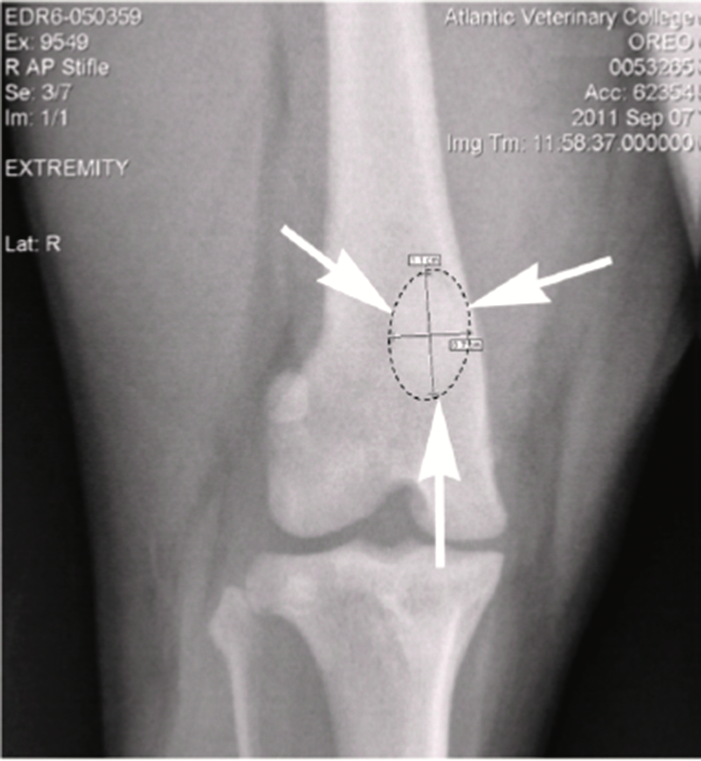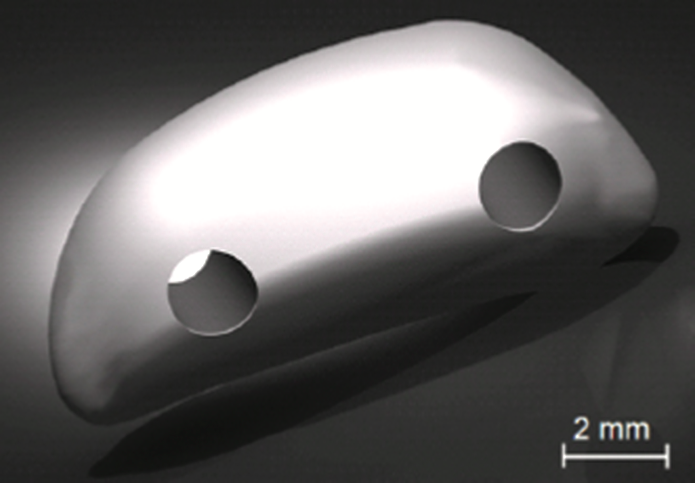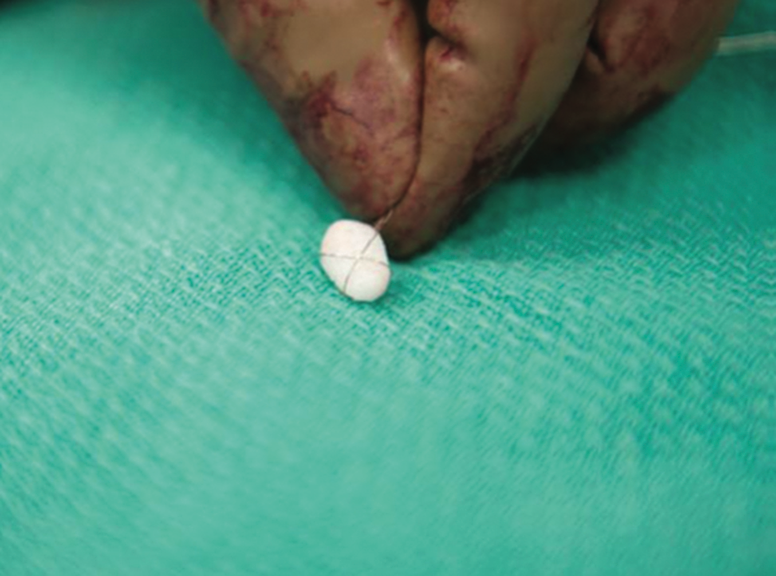To help Oreo, OIC obtained a donated patella that was used to generate a scaled digitized copy. A biomedical engineer then converted the file into a computer-aided design (CAD) model. X-ray radiographs of Oreo’s other patella were then used to modify the CAD design to match his femur.
“In Oreo’s case, we were able to produce a custom-tailored implant in only four days including design, analysis, physical testing, and manufacturing. As we move down the learning curve, it will probably be possible to produce similar implants in only a day or two.”


